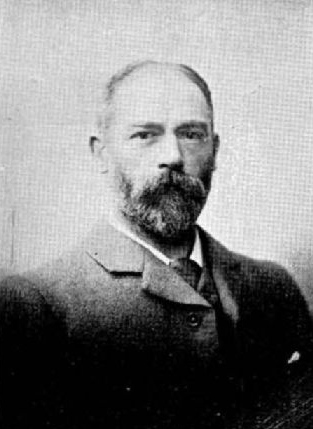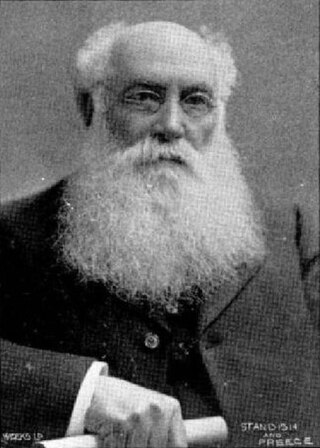
St Margaret's College is an independent girls' school in Christchurch, New Zealand founded on Anglican Christian values. It offers the dual academic pathway of NCEA and International Baccalaureate.

Christchurch Girls' High School in Christchurch, New Zealand, was established in 1877 and is the second oldest girls-only secondary school in the country, after Otago Girls' High School.

Merivale is a suburb of Christchurch, New Zealand, north of the city centre. Like all suburbs in Christchurch, it has no defined boundaries and is a general area, but for the purposes of statistical analysis only, Statistics New Zealand defines it as being Heaton Street to the north, Papanui Road to the east, Harper and Bealey Avenues to the south and Rossall Street to the west, although Real Estate advertising often will claim residences outside this area, especially St Albans to the east of Papanui Road, as being Merivale due to the perceived desirability of the area. The area directly west of Rossall Street, which is called Holmwood by Statistics New Zealand, is sometimes considered part of Merivale.

Arthur Edgar Gravenor Rhodes was a New Zealand member of parliament and mayor of Christchurch.

John Anderson was the second Mayor of Christchurch in New Zealand 1868–1869, and a successful businessman. He had a close connection with three buildings that have later received Category I heritage registrations by Heritage New Zealand. Two of these buildings were demolished following the February 2011 Christchurch earthquake.

Andrew Duncan was Mayor of Christchurch 1869–1870. From a working-class background in Scotland, he emigrated to New Zealand as a young man and became a highly respected member of the Christchurch community. He is remembered for his later work as an immigration agent in Scotland on behalf of the Canterbury Province.
Daniel Reese was a 19th-century Member of Parliament from Christchurch, New Zealand.

Armson, Collins and Harman was an architectural firm in New Zealand. It was founded by William Barnett Armson (1832/3–1883), and after his death, became the practice of two architects who articled with him, John James Collins (1855–1933) and Richard Dacre Harman (1859–1927).

St Paul's Church was a heritage-listed former Presbyterian church in Cashel Street, Christchurch. Built in 1877, the church was registered by the New Zealand Historic Places Trust as a Category I heritage building. Following the February 2011 Christchurch earthquake, the building was removed from the heritage list and demolished.

Symonds Street is a street in Auckland, New Zealand's most populous city. The road runs southwest and uphill from the top of Anzac Avenue, through the City Campus of University of Auckland, over the Northwestern Motorway and Auckland Southern Motorway and to the start of New North Road and Mount Eden Road.

Cecil Walter Wood was a New Zealand architect. He was the dominant architect in Canterbury during the interwar period.
Sir Kenneth Macfarlane Gresson was a New Zealand soldier, lawyer, university lecturer and judge. He was born on 18 July 1891 and attended Rangi Ruru. His father, John Beatty Gresson, was a solicitor in Christchurch, who died in a railway accident a few months before Kenneth Macfarlane Gresson was born. His grandfather, Henry Barnes Gresson, was one of New Zealand's first Supreme Court judges. He was buried in a family grave at St Paul's Anglican Church, Papanui.

Samuel Charles Farr was a 19th-century builder and architect in Christchurch, New Zealand. He intended to emigrate from England to Auckland, but significant shipping problems saw him end up in Akaroa in 1850 instead. From 1862, he lived in Christchurch. Farr has a number of firsts against his name: the first marriage in Canterbury, he designed Akaroa's first church, designed New Zealand's first iron verandahs, and he started Sunday schools in Canterbury. As a leading member of the Acclimatisation Society, he stocked almost every lake and river in Canterbury with fish and was instrumental in introducing the bumblebee to New Zealand. His most notable building was Cranmer Court, the former Normal School, in the Christchurch Central City; this building was demolished following the February 2011 Christchurch earthquake.

Eve Macfarlane is a New Zealand rower. Described as a "natural rower", she went to the 2009 World Rowing Junior Championships within a few months of having taken up rowing and won a silver medal. She represented New Zealand at the 2012 Summer Olympics in London as the country's youngest Olympian at those games. She was the 2015 world champion in the women's double sculls with Zoe Stevenson. At the 2016 Summer Olympics, they came fourth in the semi-finals and thus missed the A final.
Mary Victoria Gibson was a New Zealand teacher and school principal.
Helena Fannie Gibson was a New Zealand educator and the principal of Rangi Ruru Girls' School in Christchurch for its first 50 years.
Robert William England was a New Zealand architect from Christchurch.

St Andrew's Church is a heritage-listed church building located at Rangi Ruru in Christchurch, New Zealand. It was the first Presbyterian church to be built in Christchurch. It is registered as a "Historic Place – Category I " by Heritage New Zealand. The building was designed in the Gothic Revival style and was first opened for worship on 1 February 1857.
Helen Calder is a New Zealand artist. Her work is part of the permanent collection of Te Papa, the Auckland Art Gallery and the Christchurch Art Gallery.















